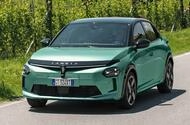Reviving a Classic: The Lancia Ypsilon’s Journey Back to Relevance
The automotive world is often a tale of survival, innovation, and nostalgia. In this context, Lancia, a brand once synonymous with Italian automotive excellence, has made a bold return with its latest model, the Ypsilon. After years of dwindling presence and a single model in the market, the revival of Lancia is not just a comeback; it’s a testament to the enduring legacy of a brand that has captured the hearts of many.
Understanding Lancia’s Resurgence
Lancia’s revival has been a long time coming. The brand had been teetering on the brink of extinction, with its last significant model launch occurring years ago. The Ypsilon, based on the popular Fiat 500, has been a surprising success in Italy, buoyed by a sense of national pride and a consumer base that often prioritizes familiarity over cutting-edge technology. This loyalty caught the attention of Stellantis, the automotive conglomerate that now oversees Lancia, leading to a renewed investment in the brand’s future.
Carlos Tavares, the CEO of Stellantis, recognized the intrinsic value of Lancia and allocated resources for a ten-year plan to rejuvenate its core model lines. This strategic move reflects a broader trend in the automotive industry, where legacy brands are being revitalized to appeal to modern consumers while retaining their historical charm.
What Makes the Ypsilon Stand Out?
The new Ypsilon comes in two variants: the Ibrida, featuring a mild-hybrid engine, and the Elettrica, an all-electric model. The latter boasts a 154bhp motor paired with a 51kWh battery, positioning it as a competitive option in the growing electric vehicle market. While the specifications may seem familiar—echoing those of other small cars on Stellantis’s e-CMP platform—the Ypsilon offers a unique driving experience that blends comfort and agility.
Driving the Ypsilon Elettrica in Turin, the birthplace of Lancia, reveals its strengths. The car is smooth and refined on highways, with sufficient power for city driving. Its handling is commendable, making it a practical choice for urban environments. Additionally, the anticipation of a rally-inspired HF version adds an exciting dimension to the Ypsilon’s appeal, promising a nod to Lancia’s storied motorsport heritage.
Design: A Key Differentiator
In an era where many vehicles share similar mechanical underpinnings, design becomes a critical differentiator. Lancia has historically been a design-centric brand, and its latest offerings reflect this ethos. Creative chief Jean-Pierre Ploué has emphasized the importance of creating vehicles that resonate emotionally with consumers. The Ypsilon’s design features, such as Stratos-inspired tail lights and a distinctive Y-front grille, showcase a blend of iconic and eclectic elements that set it apart from competitors.
Inside, the Ypsilon continues to impress with its attention to detail. From knurled gold air-vent adjusters to art deco dashboard patterns, the interior exudes a sense of luxury and creativity. The unique use of materials, including rust-colored velvet seats, adds a touch of elegance that is often overlooked in modern vehicles.
Navigating the Electric Landscape
While the Ypsilon Elettrica offers a promising range of 250 miles, real-world driving conditions can impact this figure significantly. During a test drive, the range dropped alarmingly at higher speeds, highlighting a common concern among electric vehicle users: range anxiety. Fortunately, the charging infrastructure in Turin is robust, with numerous options available, including the Plentitude network, which provides quick charging capabilities.
However, the experience was not without its challenges. A sudden electric traction system failure during charging raised questions about the vehicle’s reliability, a critical factor for consumers considering an electric vehicle. Although technicians found no faults, such incidents can erode consumer confidence, underscoring the importance of rigorous quality control as Lancia seeks to re-establish itself in the market.
The Road Ahead for Lancia
Rebuilding Lancia is no small feat. The brand faces skepticism from some Italian consumers who question the design choices and the fact that the Ypsilon is manufactured in Spain. However, the passion for Lancia remains palpable, and the brand’s rich history provides a strong foundation for its revival.
As Lancia embarks on this ambitious journey, it must navigate the complexities of modern automotive demands while staying true to its heritage. The Ypsilon represents a pivotal step in this direction, blending nostalgia with innovation. For enthusiasts and potential buyers alike, the revival of Lancia is not just about a new car; it’s about rekindling a love affair with a brand that has long been a symbol of Italian automotive artistry.
In the coming years, as Lancia continues to evolve, it will be fascinating to see how it balances its storied past with the demands of the future, and whether the Ypsilon can pave the way for a new era of success.

